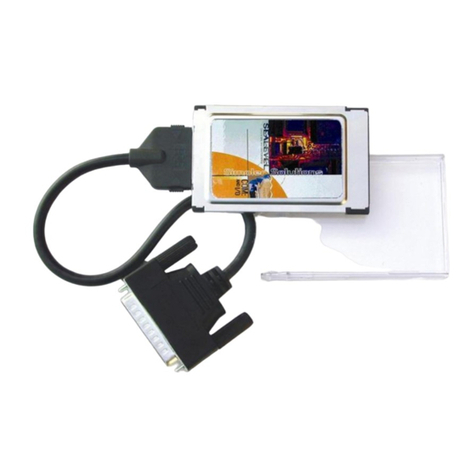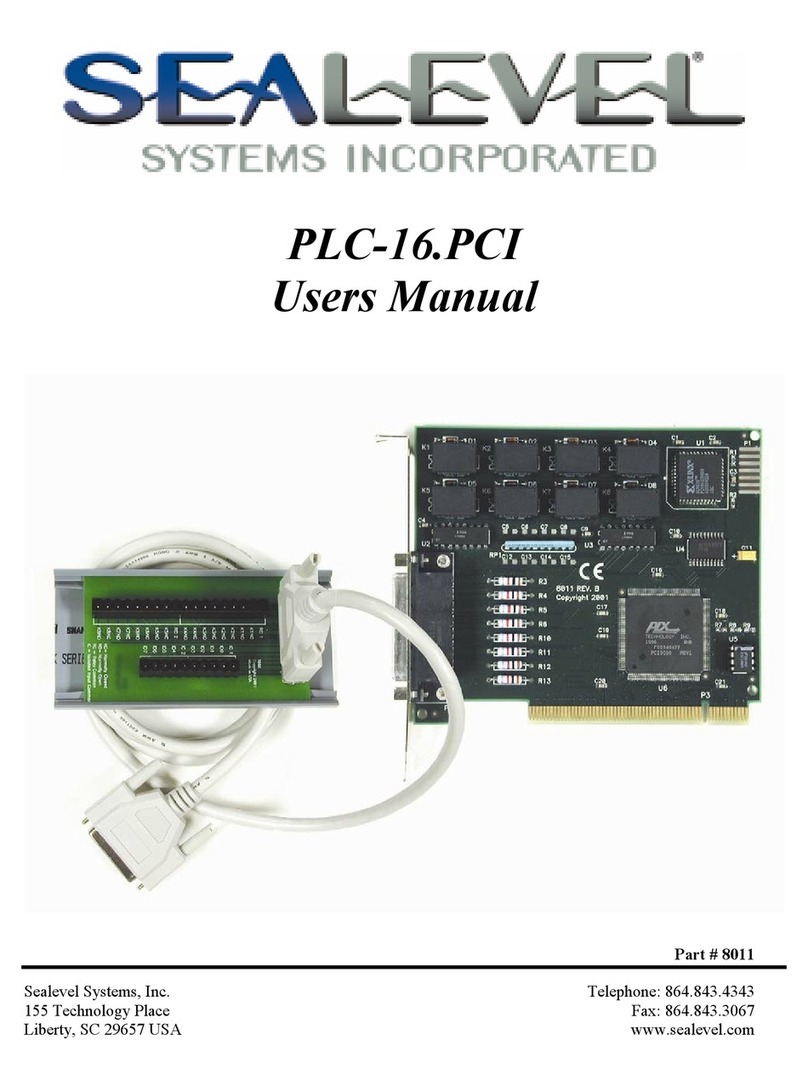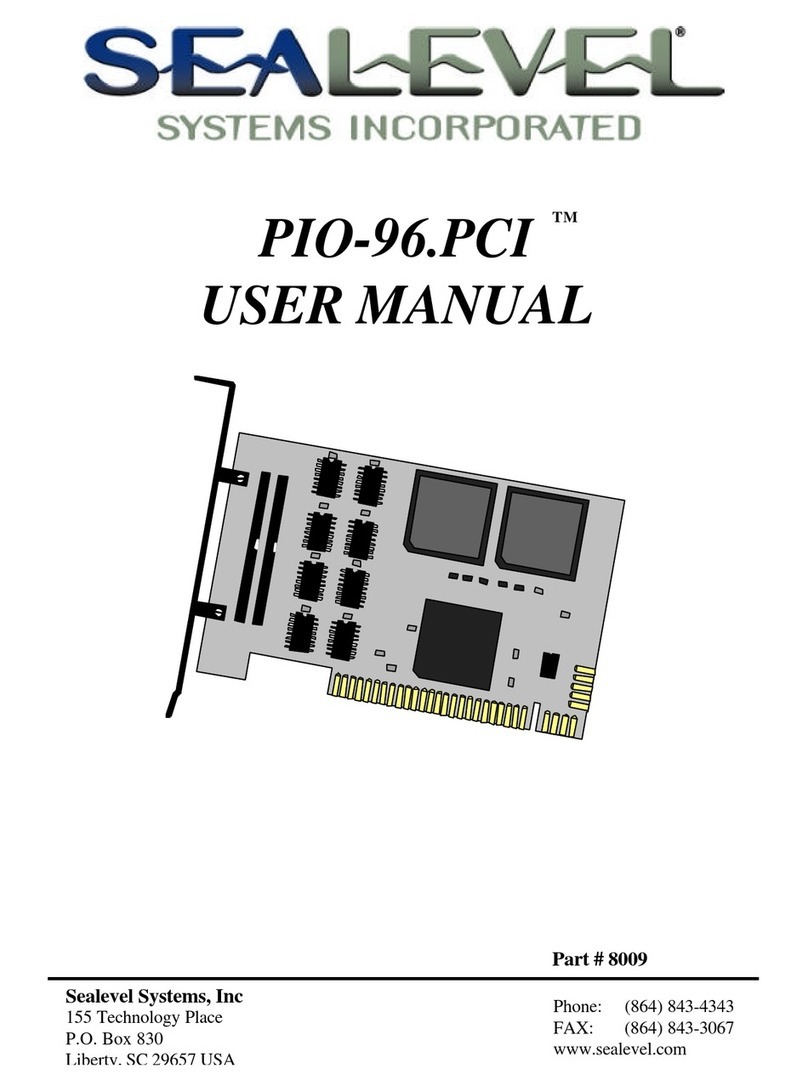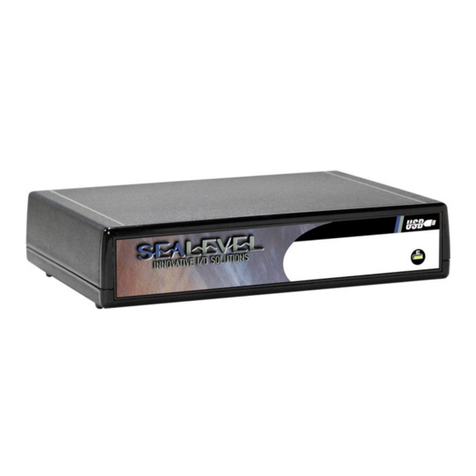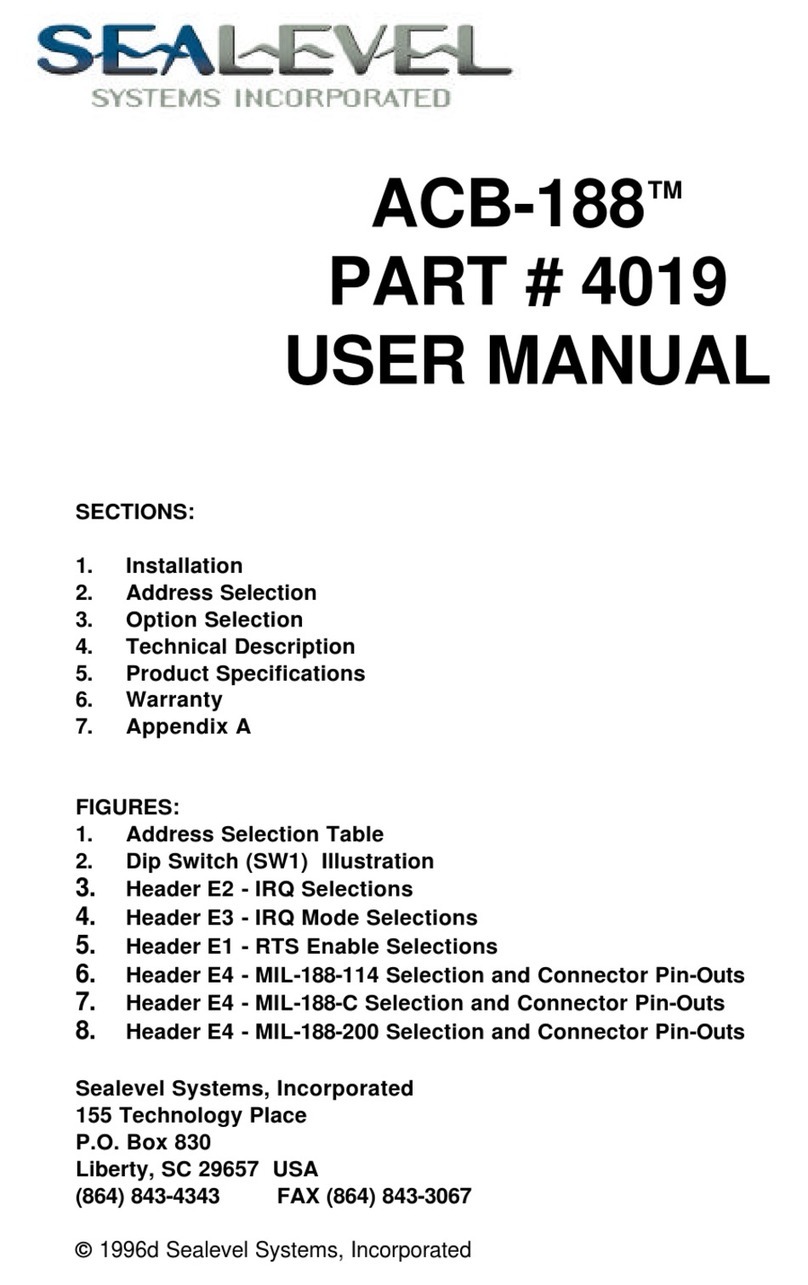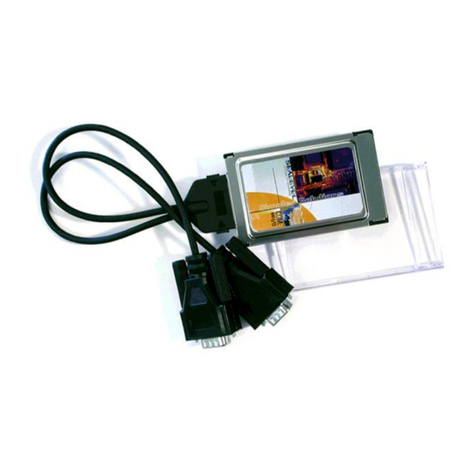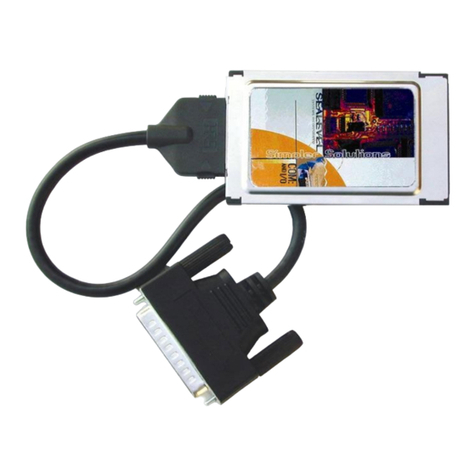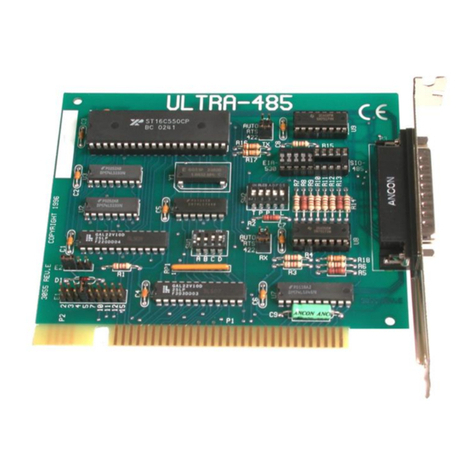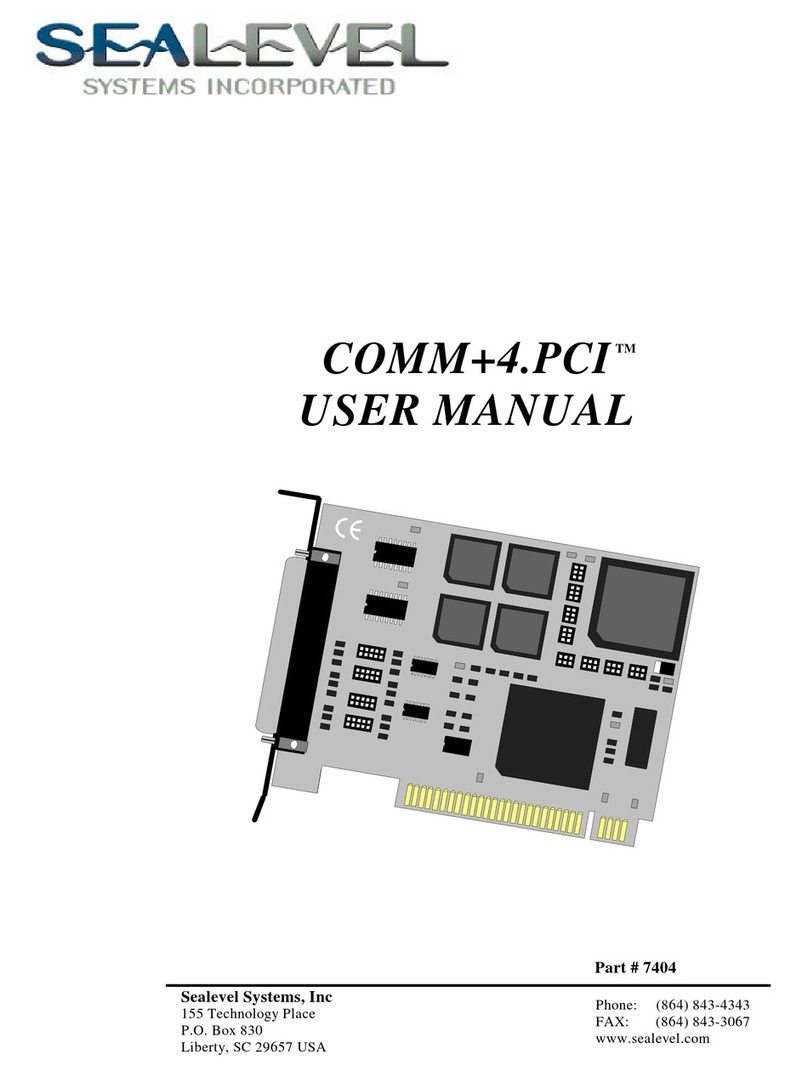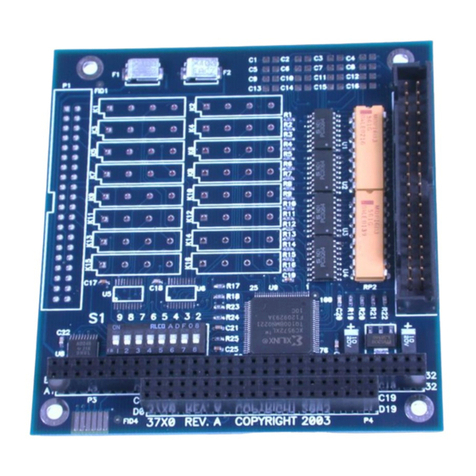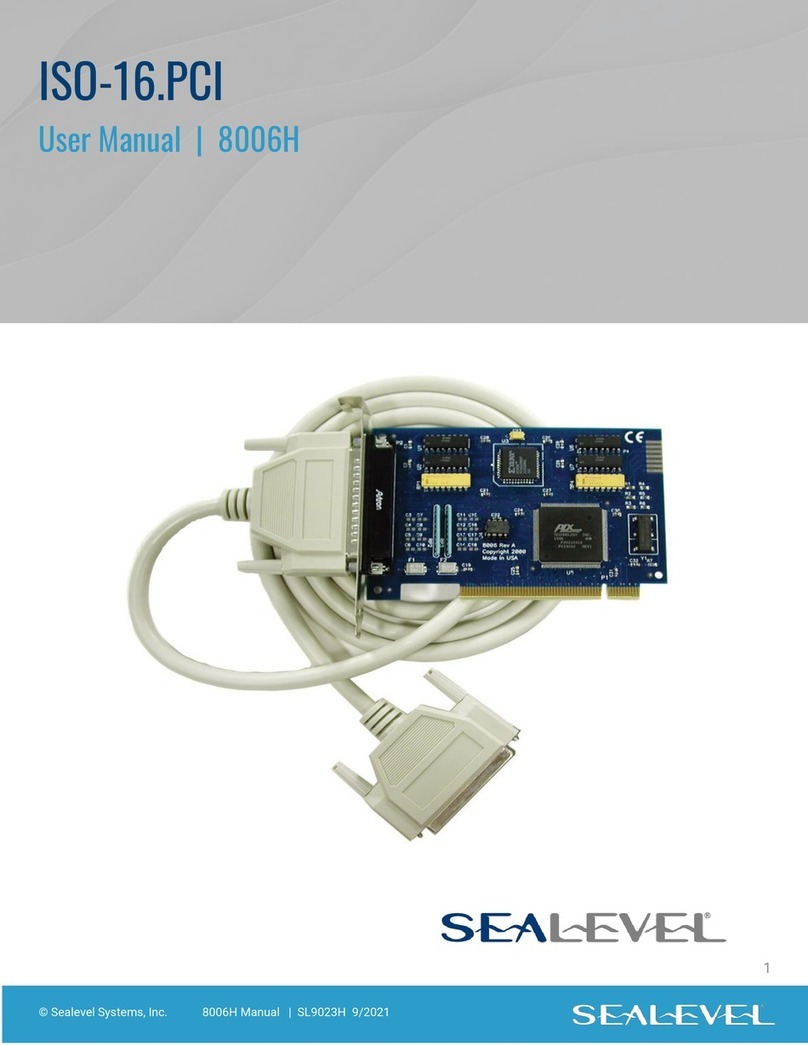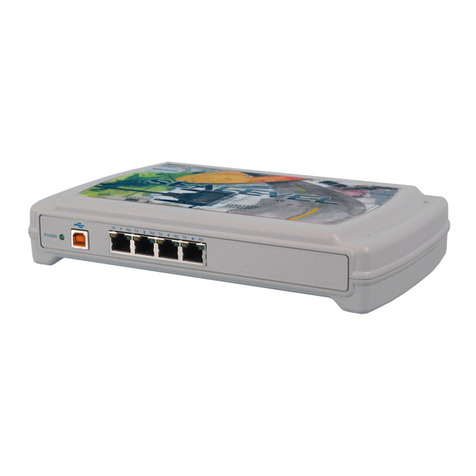Introduction
The ACB-MP+4.PCIe (Item# 5402e) is a four-port PCIe bus RS-232, RS-422, RS-485,EIA-530, EIA-530A, V.35
synchronous serial interface. Designed using the popular Zilog Z85230 Enhanced Serial Communication
Controller (ESCC), the board is an ideal solution for military, satellite, radar, banking, and other applications
that require robust synchronous communications.
For maximum flexibility, each of the serial ports can be individually configured for RS-232, RS-422, RS-
485,EIA-530, EIA-530A, V.35 communications. In RS-232 mode, all common modem control signals are
implemented for compatibility with a wide range of peripherals. A digital phase lock loop (DPLL) is included
on each port, and the board supports data rates up to 128K bps in burst mode. For easy implementation, a
fan-out cable is included that terminates the onboard 100-pin connector to four DB-25M connectors.
The ACB-MP+4.PCIe features a PCIe 1.1 interface and will operate on x1, x4, x8 or x16 PCIe Bus slots.
Software support, critical for successful synchronous communication development, is provided through
Sealevel’s SeaMAC driver. HDLC/SDLC protocols are supported as well as certain configurations of
Monosync, Bi-sync, and Raw modes.
The ACB-MP+4.PCIe also utilizes the Exar SP-506 multi-protocol electrical interface chip that allows the
ACB-MP+4.PCIe to be compliant with EIA/TIA-530/530A, EIA/TIA-232E, EIA/TIA 485, and ITU V.35.
Optional cables are available to connect RS-449, RS-530, RS-530A, V.35 and X.21 interfaces.
Features
•Compliant with RoHS and WEEE directives
•Each port individually configurable for RS-232, RS-422, RS-485, RS-530, RS-530A, or V.35
•Z85230 Enhanced Serial Communications Controller (ESCC)
•Data rates to 128K bps (Burst mode)
•Included fan-out cable terminates 100-pin SCSI-style connector on board to four DB-25M
connectors (Item# CA339)
